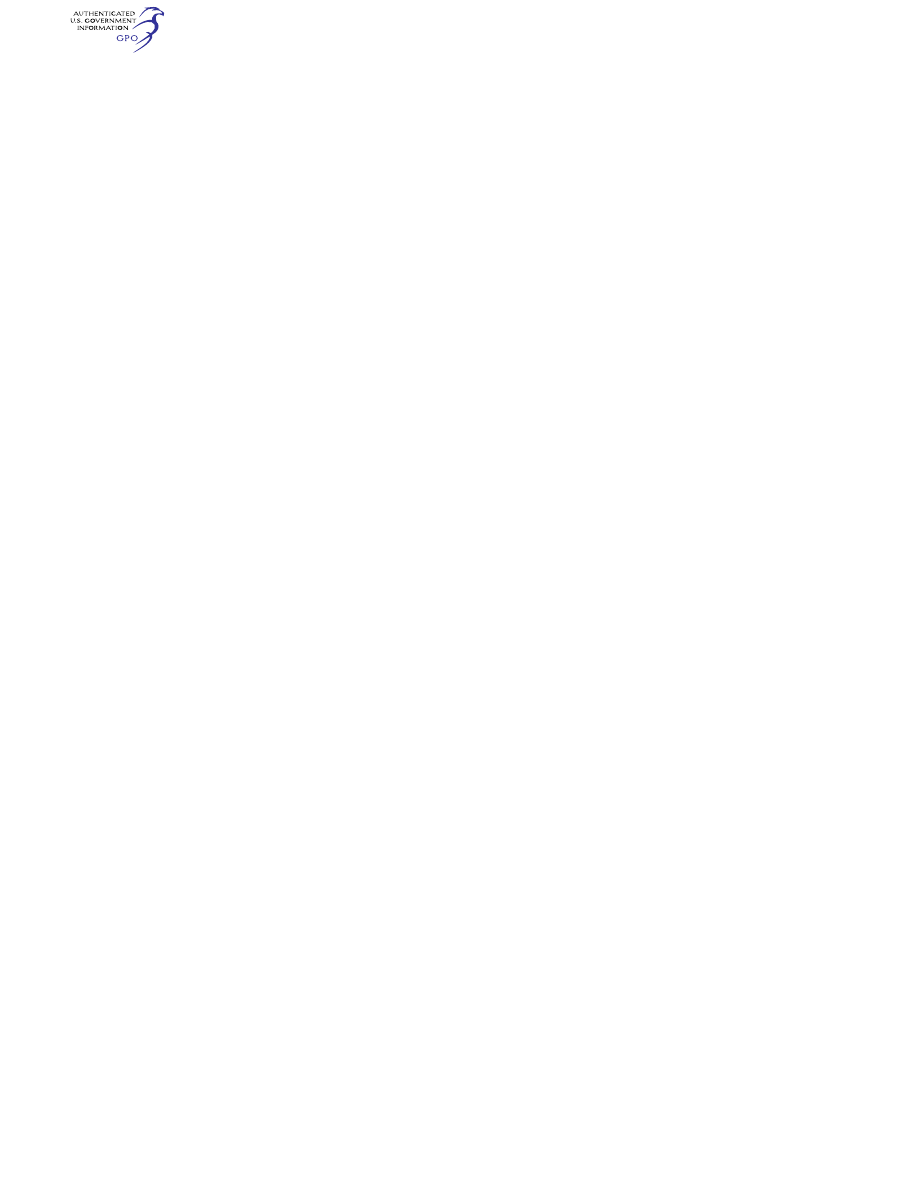
367
Federal Aviation Administration, DOT
§ 25.1533
(c)
Turbine engine installations. Oper-
ating limitations relating to the fol-
lowing must be established for turbine
engine installations:
(1) Horsepower, torque or thrust,
r.p.m., gas temperature, and time for—
(i) Maximum continuous power or
thrust (relating to augmented or un-
augmented operation as applicable).
(ii) Takeoff power or thrust (relating
to augmented or unaugmented oper-
ation as applicable).
(2) Fuel designation or specification.
(3) Maximum time interval between
engine run-ups from idle, run-up power
setting and duration at power for
ground operation in icing conditions,
as defined in § 25.1093(b)(2).
(4) Any other parameter for which a
limitation has been established as part
of the engine type certificate except
that a limitation need not be estab-
lished for a parameter that cannot be
exceeded during normal operation due
to the design of the installation or to
another established limitation.
(d)
Ambient temperature. An ambient
temperature limitation (including lim-
itations for winterization installations,
if applicable) must be established as
the maximum ambient atmospheric
temperature established in accordance
with § 25.1043(b).
[Amdt. 25–72, 55 FR 29786, July 20, 1990, as
amended by Amdt. 25–140, 79 FR 65528, Nov. 4,
2014]
§ 25.1522
Auxiliary power unit limita-
tions.
If an auxiliary power unit is installed
in the airplane, limitations established
for the auxiliary power unit, including
categories of operation, must be speci-
fied as operating limitations for the
airplane.
[Amdt. 25–72, 55 FR 29786, July 20, 1990]
§ 25.1523
Minimum flight crew.
The minimum flight crew must be es-
tablished so that it is sufficient for safe
operation, considering—
(a) The workload on individual crew-
members;
(b) The accessibility and ease of oper-
ation of necessary controls by the ap-
propriate crewmember; and
(c) The kind of operation authorized
under § 25.1525.
The criteria used in making the deter-
minations required by this section are
set forth in appendix D.
[Doc. No. 5066, 29 FR 18291, Dec. 24, 1964, as
amended by Amdt. 25–3, 30 FR 6067, Apr. 29,
1965]
§ 25.1525
Kinds of operation.
The kinds of operation to which the
airplane is limited are established by
the category in which it is eligible for
certification and by the installed
equipment.
§ 25.1527
Ambient air temperature and
operating altitude.
The extremes of the ambient air tem-
perature and operating altitude for
which operation is allowed, as limited
by flight, structural, powerplant, func-
tional, or equipment characteristics,
must be established.
[Doc. No. 2000–8511, 66 FR 34024, June 26, 2001]
§ 25.1529
Instructions for Continued
Airworthiness.
The applicant must prepare Instruc-
tions for Continued Airworthiness in
accordance with appendix H to this
part that are acceptable to the Admin-
istrator. The instructions may be in-
complete at type certification if a pro-
gram exists to ensure their completion
prior to delivery of the first airplane or
issuance of a standard certificate of
airworthiness, whichever occurs later.
[Amdt. 25–54, 45 FR 60173, Sept. 11, 1980]
§ 25.1531
Maneuvering flight load fac-
tors.
Load factor limitations, not exceed-
ing the positive limit load factors de-
termined from the maneuvering dia-
gram in § 25.333(b), must be established.
§ 25.1533
Additional operating limita-
tions.
(a) Additional operating limitations
must be established as follows:
(1) The maximum takeoff weights
must be established as the weights at
which compliance is shown with the
applicable provisions of this part (in-
cluding the takeoff climb provisions of
§ 25.121(a) through (c), for altitudes and
ambient temperatures).
(2) The maximum landing weights
must be established as the weights at
VerDate Sep<11>2014
09:06 Jun 28, 2024
Jkt 262046
PO 00000
Frm 00377
Fmt 8010
Sfmt 8010
Y:\SGML\262046.XXX
262046
jspears on DSK121TN23PROD with CFR
